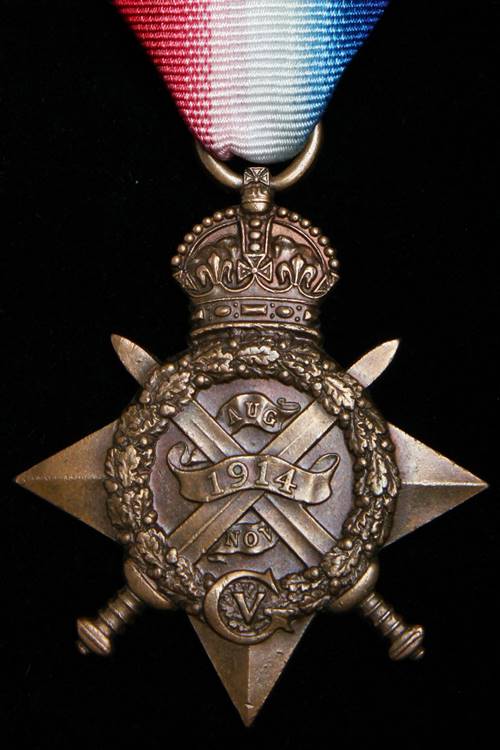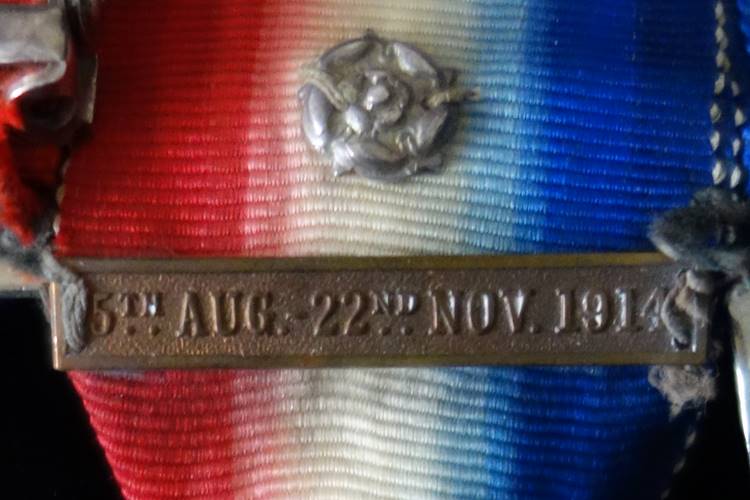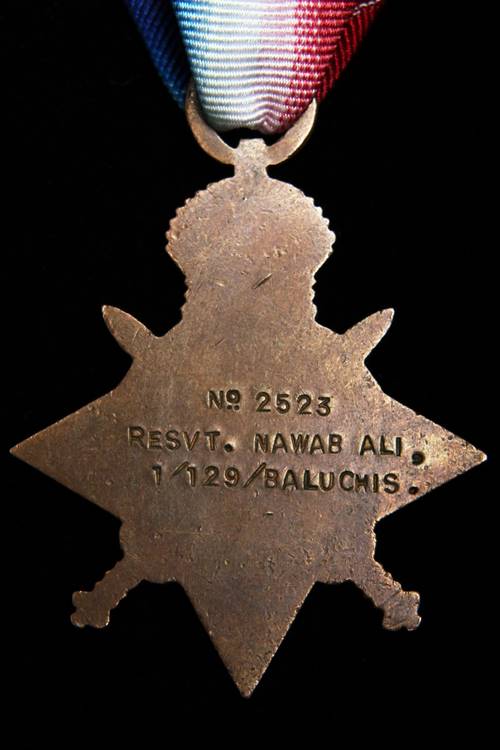This article is about the 1914 Star and will explain how a soldier qualified for the medal and help you to find its records. The 1914 Star is often referred to as the Mons Star. I have written articles about the other British campaign medals of the First World War as well as a variety of guides to help you research soldiers:
- 1914-15 Star
- British War Medal
- Allied Victory Medal
- Researching Soldiers who Served in the British Army
The 1914 Star (Mons Star)
In November 1917, Army Order 350 announced the award of a 1914 Star, given for service in France and Belgium between 5 August and 22 November 1914. The award criteria was as follows:
Provided the claims are approved by the Army Council, the Star will be granted to all officers, non-commissioned officers and men of the British and Indian Forces, including civilian nursing sisters, nurses and other employed with military hospitals, who actually served in France or Belgium, on the establishment of a unit of the British Expeditionary Forces, between the 5th August 1914, and midnight of the 22/23rd November 1914.
Army Order 350 of 1917
The 1914 Star could not be awarded on its own and was always accompanied by the British War Medal and Victory Medal. Men who served in other theatres of operations outside France and Belgium between 5 August and 22 November 1914 were awarded the 1914-15 Star. The medal is often called the Mons Star, after the famous battle fought by the British Expeditionary Force at Mons on 23 August 1914. However, most of those who qualified for the 1914 Star took no part in the battle, while others, like the men of Indian Corps, were not even in the country when clait was fought. The medal became known as the Mons Star from its issue in 1918 and the following appeared in the Sunday Mirror on 4 August 1918:
On this solemn day [4th anniversary of war] may I put in a plea that the decoration so prized by the remnant of our ”Old Contemptibles” shall be called by its correct name, the ”1914 Star,” and not the ”Mons Star”? Only two divisions were fully engaged at Mons, and our greatest glory in 1914 was the first battle of Ypres.
In 1919, Army Order 361 authorised the issue of a clasp to be worn on the 1914 Star’s ribbon. In addition, a silver rose (rosette) was issued to be worn in the centre of the medal ribbon sewn onto a soldier’s tunic. Though the silver rose is often seen attached to the medal’s ribbon along with the clasp. The award criteria was as follows:
His Majesty the King has been graciously pleased to approve of the issue of a clasp to officers, warrant officers, non-commissioned officers and men who have actually been awarded the ‘1914 Star’ under Army Order 350 of 1917, and who actually served under fire of the enemy in France and Belgium between the 5th August, 1914, and midnight 22nd/23rd November, 1914.
Army Order 361 of 1919.
You will often see the phrase “Clasp & Roses” or “C&R” recorded on the Medal Index Card of soldiers who qualified for the clasp. However, this was not always recorded on a Medal Index Card even when a soldier qualified. Also, not all soldiers who qualified for the 1914 Star qualified for the clasp. In addition many soldiers didn’t add the clasp or rose to their ribbon. Therefore, unless you have a very clear photo or know the soldier’s medal entitlement, you won’t be able to tell a 1914 from a 1914-15 Star.
Description of the 1914 Star
Obverse: A star surmounted by the Imperial Crown and crossed by two swords. The medal has three scrolls, the central of which contains “1914”, while the one above, “AUG” and below, “NOV”, representing the qualifying period for the medal. The royal cypher of King George V,”GV” is below, resting on a laurel wreath which encircles the scrolls.
Reverse: Plain. The reverse of a 1914 Star is impressed with the recipient’s details including name, regimental number (if applicable), unit and rank.
Size: Height 62 mm, width 44 mm.
Metal: Tombac Bronze (92% copper, 8% zinc).
Naming: Impressed in block capitals on the reverse.
Number Issued: Approximately 378,000.
Designer: William Henry James Blakemore.
1914 Star Records
There are two documents available which record the award of a 1914 Star to a soldier who served the British Army, their Medal Index Card and an entry in the 1914 Star Medal Roll. There will also be a separate Medal Roll for the British War Medal and Victory Medal. A 1914 Star Medal Index Card will usually record the exact unit a soldier was serving with which can be very useful if there’s no surviving service record. This is due to medal rolls for soldiers who served in a corps, Royal Artillery, Royal Engineers etc. not recording the units a soldier served abroad with. Both of these records are available to view on Ancestry with Medal Index Cards usually being free to view and download.



